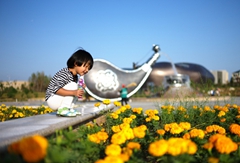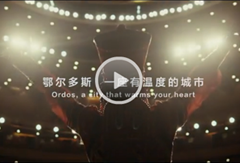Spring Festival customs and traditions for ethnic Mongolians
Updated: 2020-04-23  Print
Print 



People in traditional Mongolian costumes celebrate Chinese New Year. [Photo/nmglyw.com.cn]
In ancient times, Chinese New Year, or Spring Festival, was called "white festival" in Mongolian as pure white milk-made food was served for the festival. Similar to the Han nationality, ethnic Mongolian people celebrate the festival with dumplings and firecrackers, while some unique customs and traditions are still honored. For example, ethnic Mongolians slaughter, prepare and eat lamb at family reunions at New Year's Eve. They also hold rituals to honor their ancestors at New Year's Eve.
After a year of hard work, the people will celebrate the festival with singing and dancing as a good conclusion to the year and to express their wishes for a promising year to come. Spending Spring Festival on the grasslands is the best way to experience the traditions of ethnic Mongolians.
1. Rituals to honor ancestors
Rituals to honor ancestors take place around New Year's Eve. Legend says that their wise and clever ancestors saved the ethnic Mongolians by moving from a blocked land with limited space to the vast grasslands they now occupy. On that night, people dance and sing all night.
2. Absorbing customs and traditions of the Han nationality
In recent years when communications between the Han nationality and ethnic Mongolians became closer, members of the ethnic minority have absorbed some Han customs and traditions.
On the first day of the lunar calendar, family members dress up in festive costumes and gather together to celebrate the New Year. The young kowtow to the elderly to pay their respects and the elderly send presents or "red envelopes" in return to express their good wishes.
3. Rituals to pay worship to fire

People circle around a bonfire at a fire-worship ritual. [Photo/nmglyw.com.cn]
The minority has kept the custom of fire-worship rituals from long, long ago as they believe that a fire symbolizes good luck for the next year.





 Ordos Impression
Ordos Impression Ordos WeChat
Ordos WeChat Ordos Reported
Ordos Reported


